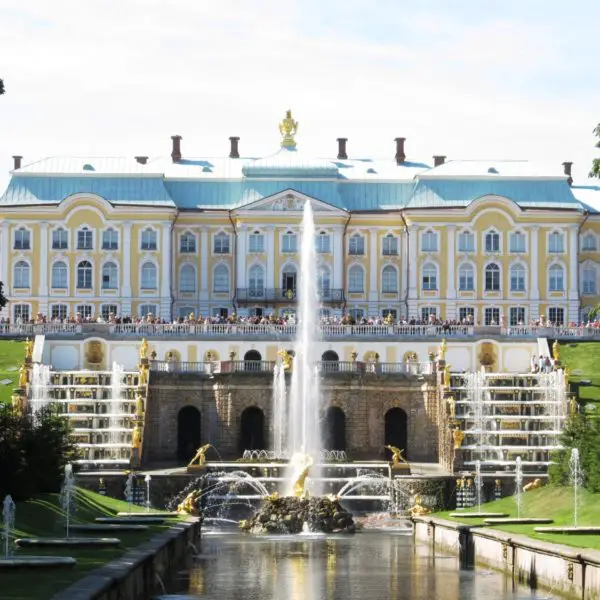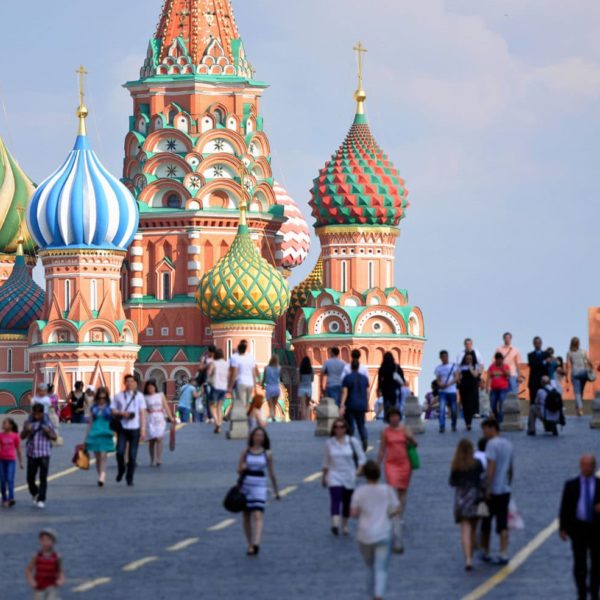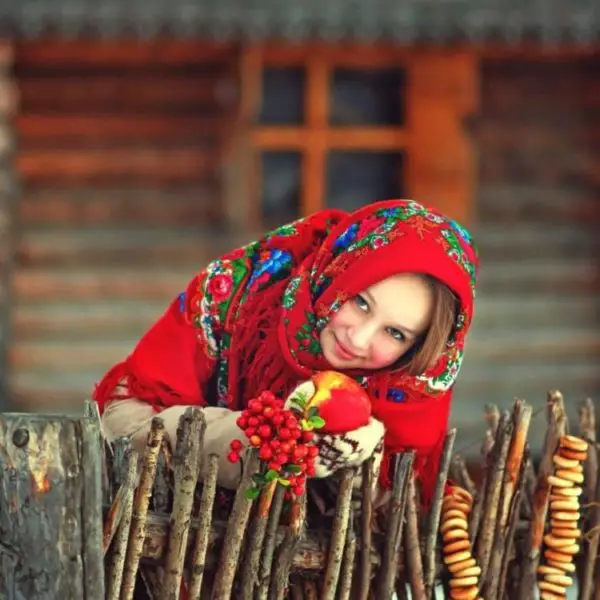Russian architecture - discover the history of Russia's architectural gems
To learn more about Russia’s rich cultural history, all you need to do is look around. Russian architecture, from its signature onion dome rooftops to red-brick kremlins, tells a thousand tales about the nation’s past.
Russian architecture is still relatively unknown in the West, with most travellers flocking to the Kremlin in Moscow or the St. Isaacs Cathedral in St. Petersburg when in Russia. However, the landmarks of Russia’s major cities do not even begin to scratch the surface of the country’s rich history.
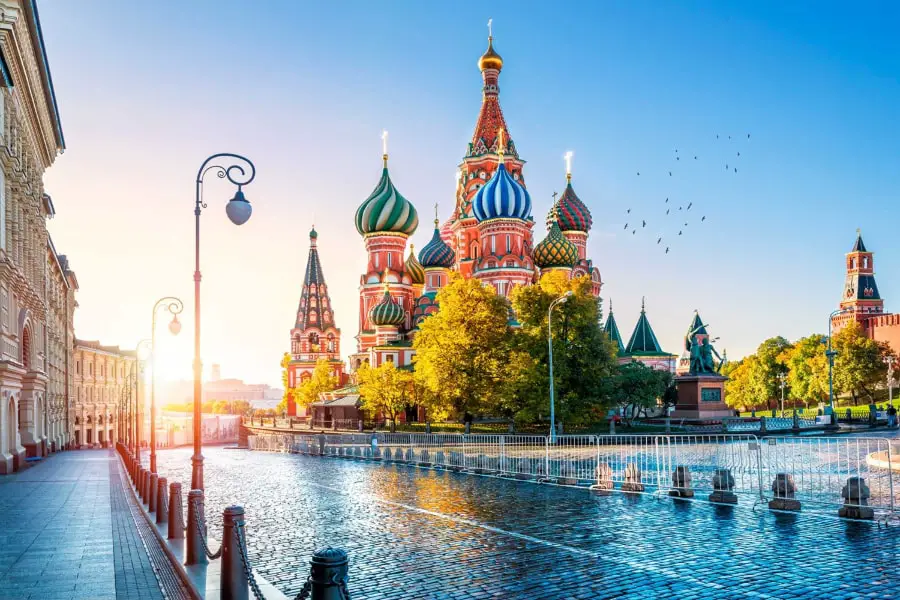
From tiled copulas to baroque masterpieces, Russian architecture is distinctive and instantly recognisable. The many historical influences and forms of craftsmanship, much like Russia’s landmass, are incredibly vast and diverse and reflect the centuries-old story of a nation. These buildings, landmarks and small towns or cities not only reflect Russia’s origins but also bring to the life the culture and personality of the nation and its imperial roots.
Through the below Russian architecture timeline, it is possible to better understand the development of the varied and splendid architectural styles throughout Russia.
Table of Contents
Russian architecture in the Kievan Rus Period (988 – 1230)
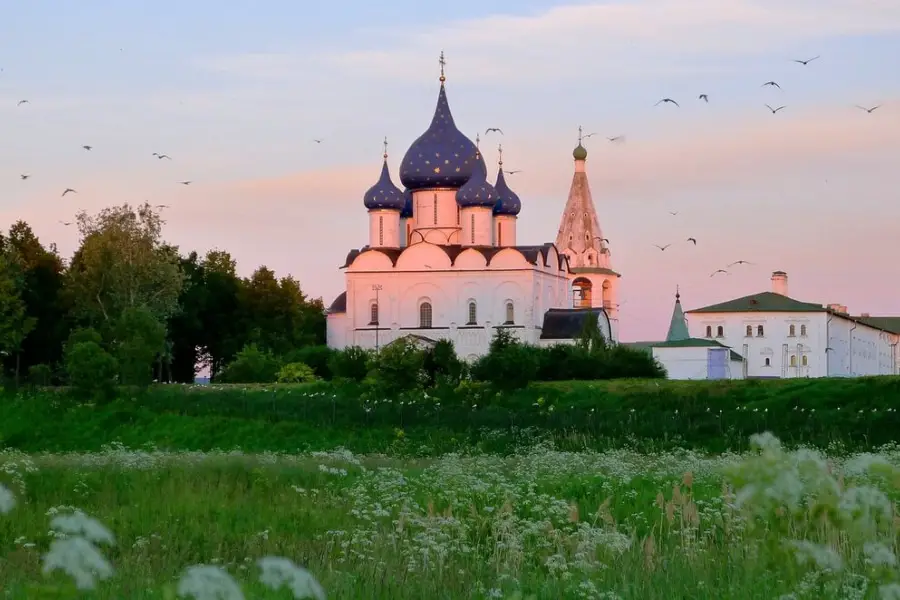
The Church of the Tithes in Kiev became the first church building to be constructed from stone, and early churches were decorated with frescoes and mosaics in the Byzantine style. Other examples of this early architecture can be seen in the Saint Sophia Cathedral in Veliky Novgorod and the Cathedral of Nativity, Suzdal.
Russian architecture in the Early Muscovite period (1230 – 1530)
In the period beginning 1230, the Mongols heavily pillaged Russia, so much so that Russia was unable to construct buildings in stone for the next five hundred years. There was one saving grace; however, that Novgorod and Pskov were left untouched and have therefore preserved some of the finest examples of medieval churches in Russia.
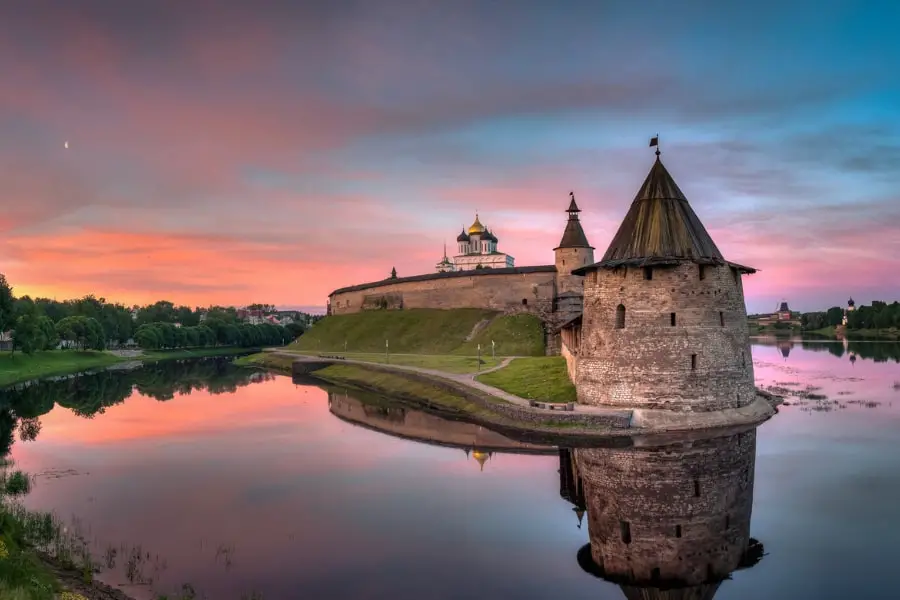
These towns house churches such as the Saviour on Illyina Street which was built in 1373, showcasing high pitched roofs, exquisite carvings and medieval frescoes. Alternatively, Pskov preserved unique elements such as corbel arches and bell towers. This style of design was introduced by Pskov Masons to Moscow and can be seen in many buildings of the 15th century including the Deposition Church of the Moscow Kremlin.
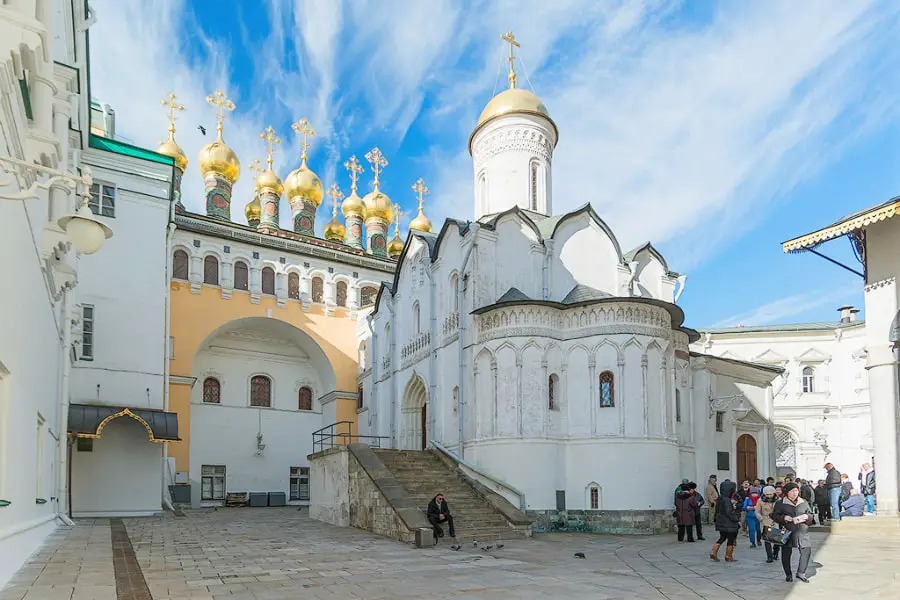
There are a plethora of other forms of architecture that derive from the time of Ivan III’s reign including fortifications such as Kitai Gorod, and the Kremlin. Other examples from this period include the Ivan the Great Bell Tower, Spasskaya Tower in the Moscow Kremlin and Saint George Cathedral in Yuryev Polsky.
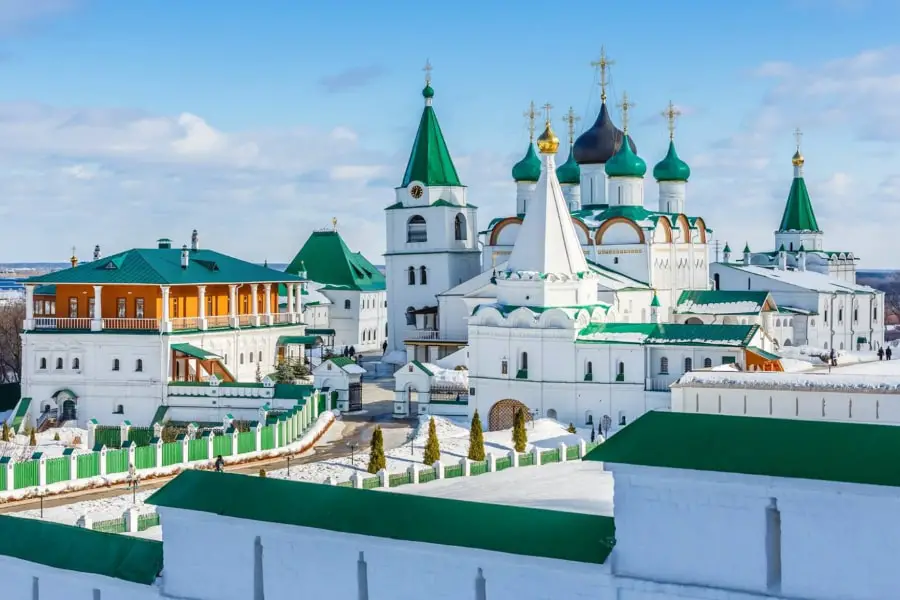
Pechersky Ascension Monastery founded in the 14th century, this monastery became the spiritual and religious centre of the Principality of Suzdal and Nizhny Novgorod. Surrounded by a red brick wall, the monastery resembles a traditional Russian Kremlin.
Russian architecture in the Middle Muscovite period (1530 – 1630)
A pivotal development during the 1500s was the introduction of tented roofs into brick architecture. This design is thought to have originated in northern Russia where the design was successful in preventing snow from accumulating on wooden pitches and huts.
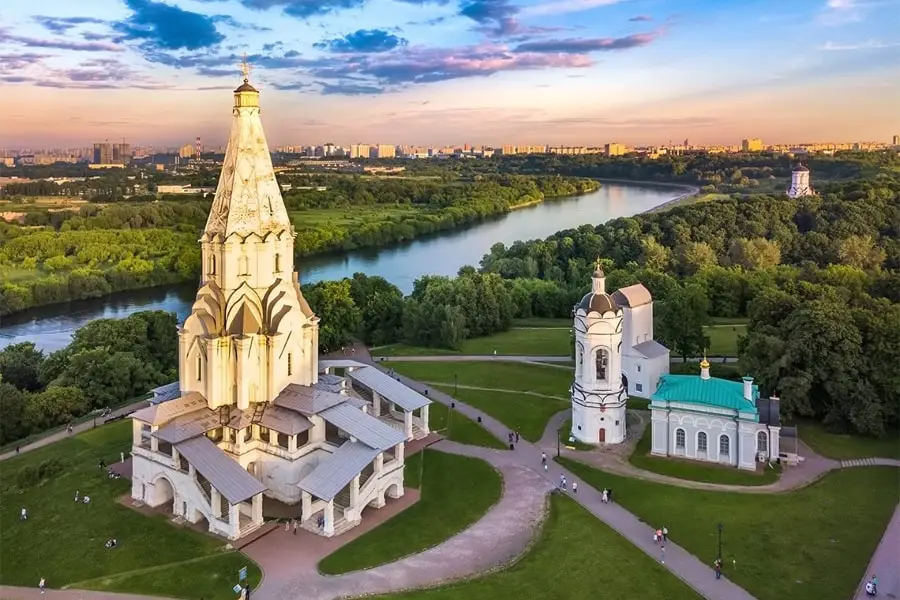
The Ascension Church in Kolomenskoe is one of the first tent brick churches to have been constructed. It is suggested that the uniqueness of this style, which is unfound in other Orthodox countries, is indicative of the Russian desire to distinguish themselves from Byzantine influence. Some key examples of this architecture can be found in the Church of St John the Baptists in Kolomenskoye and the famous Saint Basil’s Cathedral in Red Square, built in 1561.
Russian architecture in the Late Muscovite period (1630 – 1712)
In times of financial devastation, the church and state were bankrupt and unable to finance large construction works. During this time, wealthy merchants in Yaroslavl stepped in and built many large cathedral style churches, often with five cupolas surrounded by bell towers and aisles.
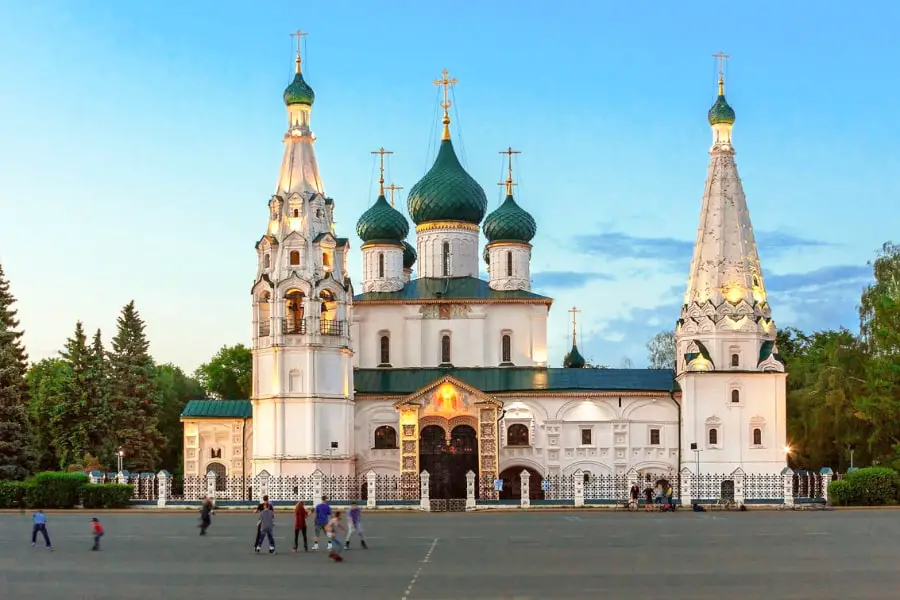
These began as asymmetrical buildings, as seen in the Church of Elijah the Prophet before becoming strictly symmetrical, with an increase in the size of cupolas that extended taller than the buildings themselves. They were also adorned with intricate tiles such as that in the Church of John the Chrysostom on the Volga. This extravagance culminated in the Church of St John the Baptist, which is famously known as the largest church in Yaroslavl, comprised of fifteen cupolas and hundreds of frescoes. The structure itself is wrapped in exquisitely carved motifs and tiles.
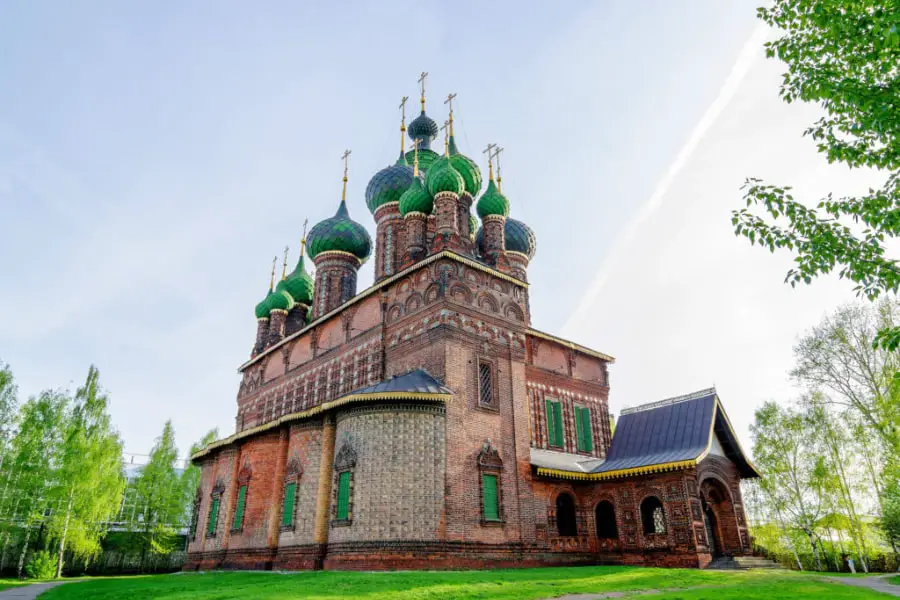
During this time, the tent structure was still favoured and the zenith of this architecture was the Assumption Church in Uglich (1627). However, the tent style was quickly outlawed by Nikon who declared they were ‘un-canonical’. Subsequent to this banning, there was an increase in ecclesiastical buildings like the Rostov Kremlin on the Nero Lake.
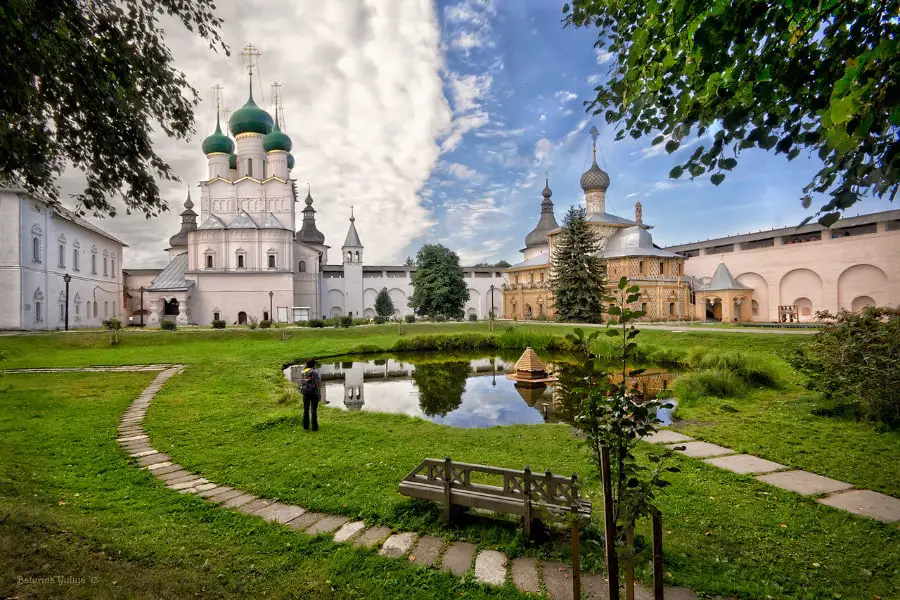
Now that the tent structure was banned, muscovites changed their peaked designs into rows of corbel arches known as kokshniki and this characterised the 17th century Moscow style. This is exemplified in the Kazan Cathedral at Red Square. The epitome of this flamboyant styles can be seen in the Church of St. Nicholas in Kitai Gorod, but which was destroyed by Stalin.
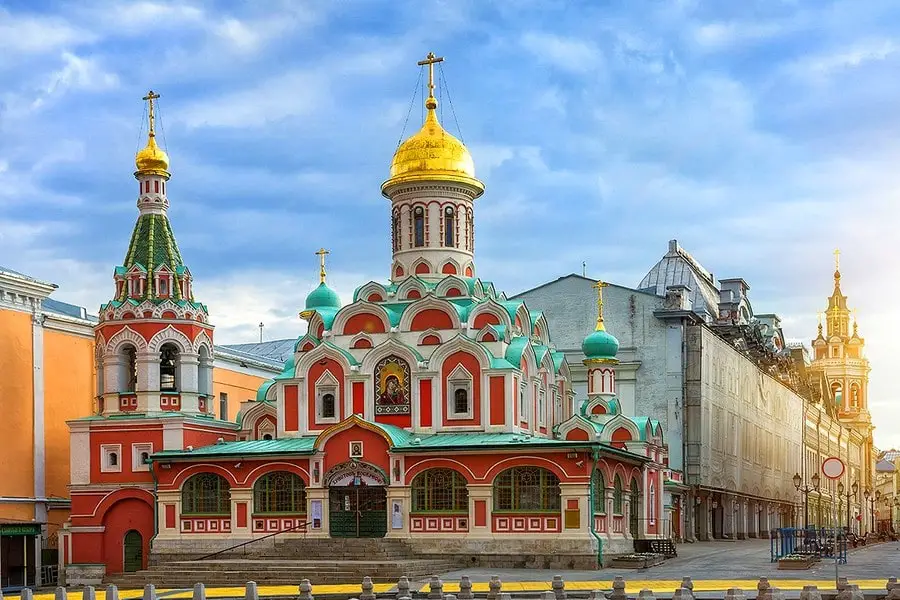
Slowly, Russian architecture became influenced by Polish and Ukrainian baroque and small chapels were built near Moscow on estates belonging to the family Naryshkin, which is where the Naryshkin Baroque style comes from. The Trinity Church at Lykovo (1696) is so decorated that it appears almost to be a jewel, rather than a work of masonry.
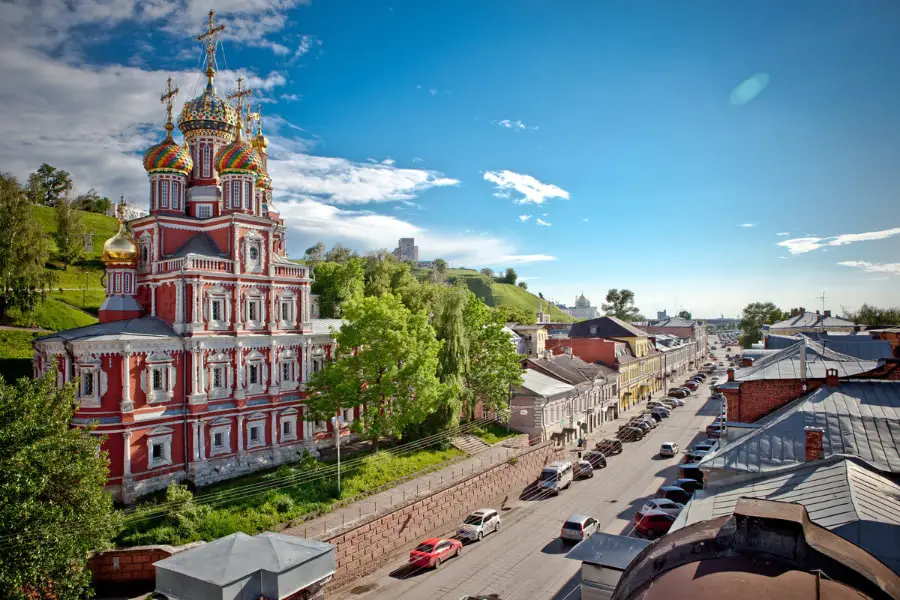
As the style grew, it replaced canonical architecture and gained traction across the region through funding by merchants who sponsored the construction of the Baroque churches and buildings in Nizhny Novgorod, such as the Nativity Churh. This benefaction extended into the remote tundra where the Presentation Cathedral in Solvychegodsk (1693) was built.
Russian architecture in the Imperial Russia period (1712- 1917)
Originally intended to be the central church of a monastery, Smolny Cathedral’s stunning blue-and-white building is undoubtedly one of Russia’s architectural masterpieces. It was designed by Italian architect Francesco Bartolomeo Rastrelli who also created the Winter Palace, the Catherine Palace in Pushkin, the Grand Palace in Peterhof and many other major St. Petersburg landmarks.The Smolny Convent consists of the cathedral, or ‘sobor,’ and a beautiful complex which surrounds it, with onion-dome towers topped with the gold-plated crosses towering over the grounds.
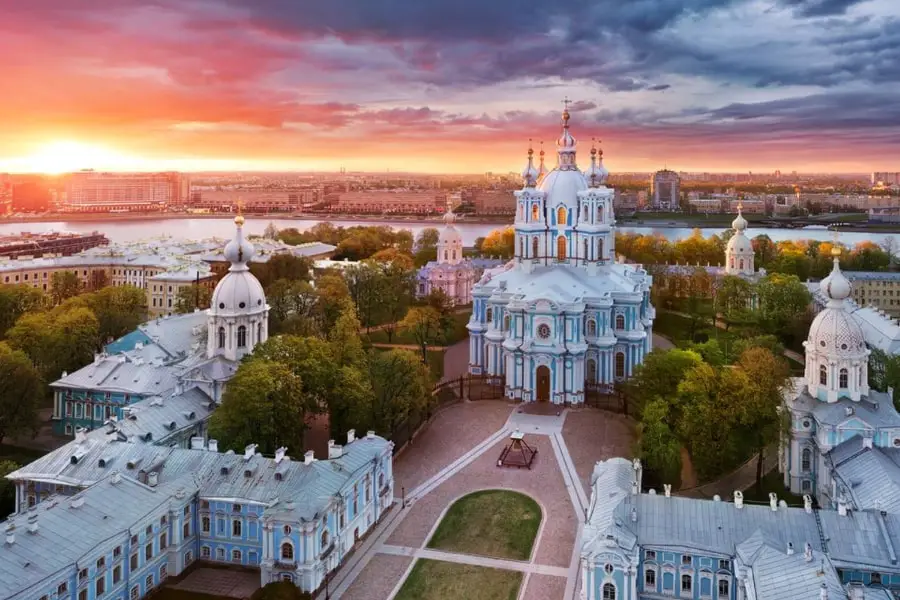
Throughout imperial Russia, various styles of baroque architecture dominated, beginning with the Dutch style, favoured by Peter I of Russia. The construction of the Peter and Paul Cathedral and the Menshikov Palace can be attributed to this Petrin Baroque style. However, during the reign of Anna and Elizabeth Petrovna, there was a shift to a more luxurious baroque style of Bartolomeo Rastrelli. This can be seen in the Winter Palace and the Catherine Palace.
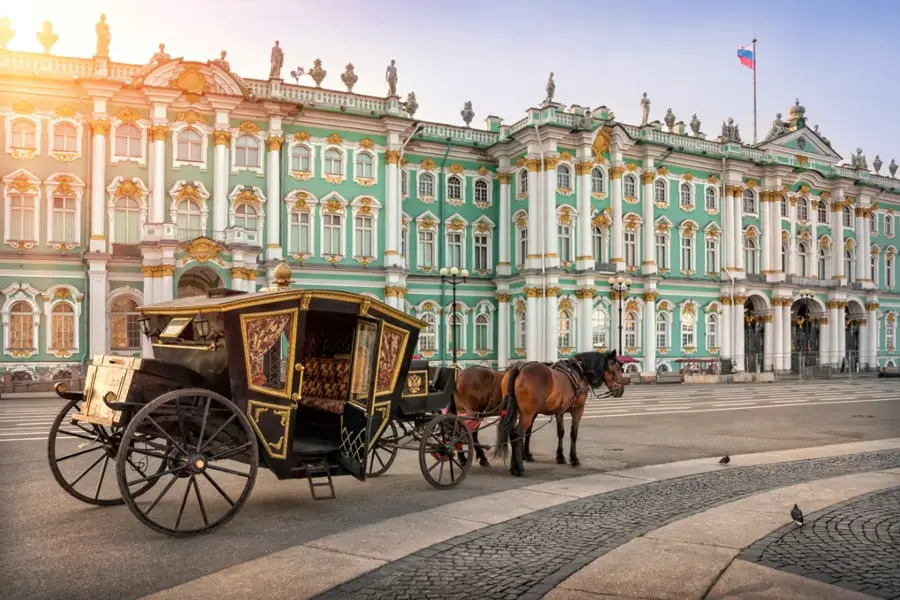
Catherine the Great commissioned largely neoclassical architects from Italy and Scotland to construct impressive monoliths such as a the Alexander Palace and the Trinity Cathedral of the Alexander Nevsky Lavra. Catherine also welcomed Gothic revival style as introduced by Vasily Bazhenov and Matvei Kazakov in Moscow.
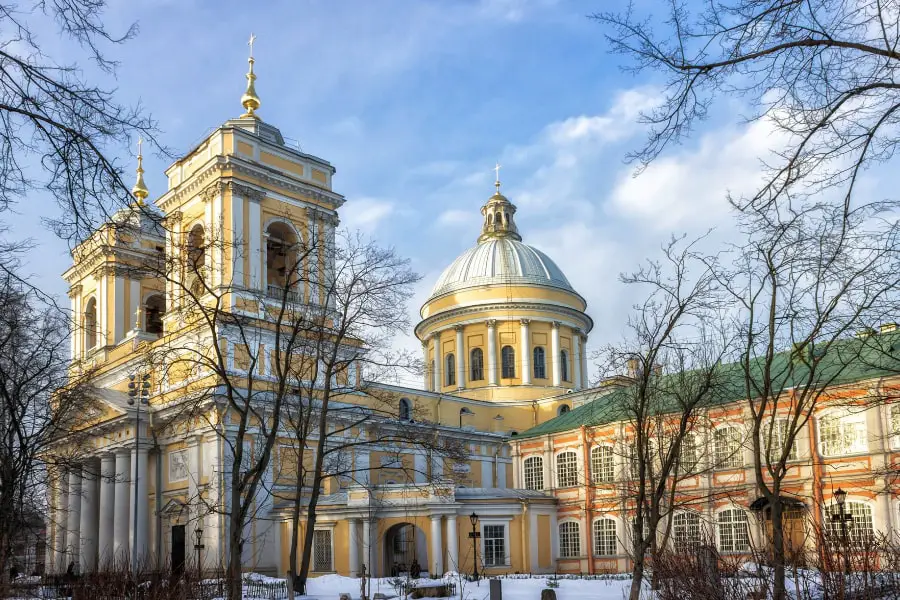
The Empire style was brought to prominence by Alexandra I of Russia and he was known for this style throughout his reign. This style can be seen in the Kazan Cathedral, the Admiralty Building, the Bolshoi Theatre and the Narva Triumphal Gats in Saint Petersburg. As a result of the fire of 1812 which ravaged Moscow, many houses were rebuilt in the empire style, proliferating its dominance during his reign.
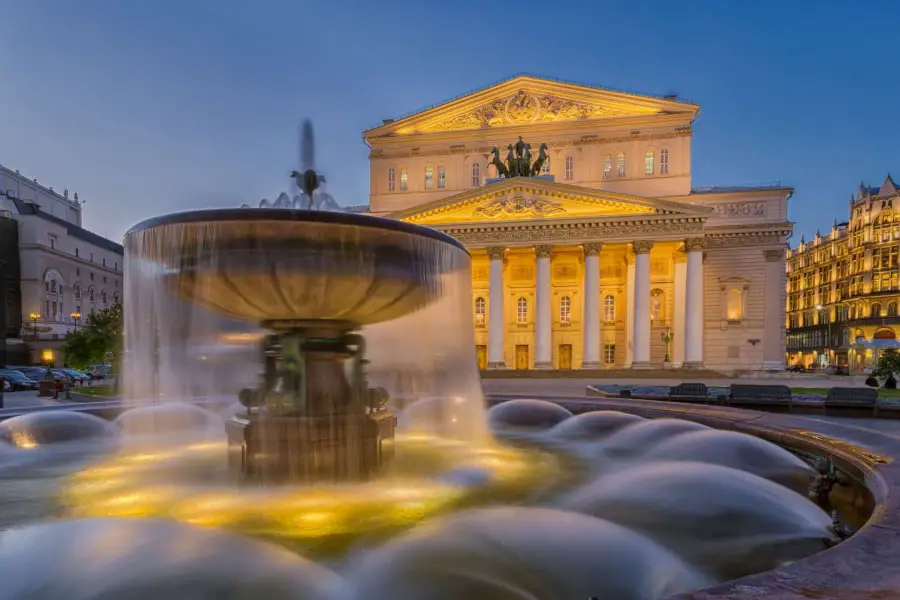
From 1830, Nicholas I liberated regulation in architecture and so early eclecticism was introduced. The Cathedral of Christ the Saviour is reflective of Konstantin Ton’s style which became dominant during this period.
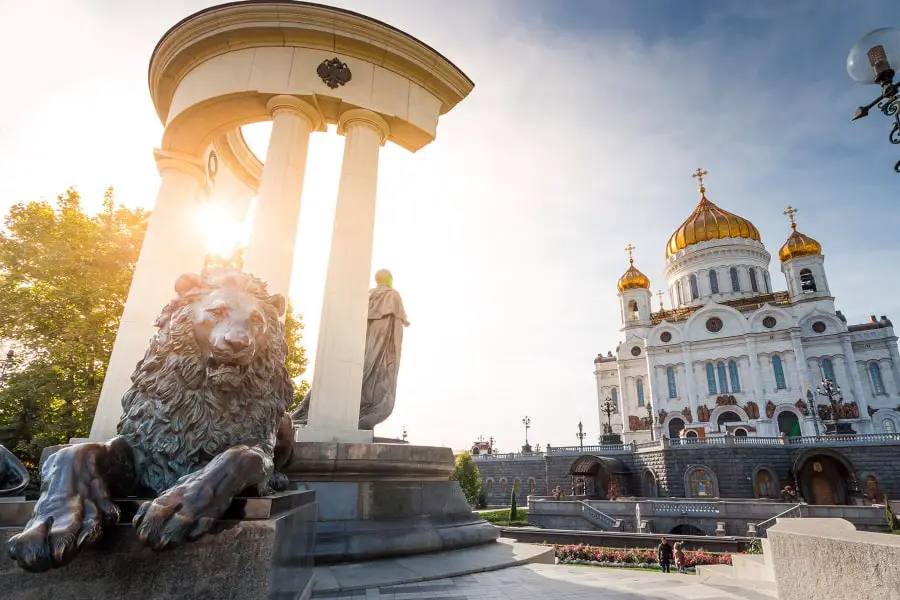
Alexander II and Alexander III were keen enthusiasts of Russian Byzantine revival in churches and spurred a culture of Russian revival architecture. Throughout 1895 to 1905, Art Nouveau was active in Moscow until the commencement of WW1, where it paved the way for a change to Russian Neoclassical revival.
Russian architecture in the Post Revolution period (1917 – 1932)
Post-revolution, the most influential revivalist work was formalism. This is exemplified by the Tower of the Third Internationale, which included a towering spiral encircling glass chambers. Although this was not constructed, it inspired a new wave of constructivist architecture in Russia and led to the completion of the Shukhov Tower which now extends 160 meters into the Moscow skyline. In a country of once-futuristic relics, Moscow’s Shukhov Radio Tower stands alone, and it stands taller than nearly anything else. A 50-story conical structure of steel latticework designed by the legendary engineer Vladimir Shukhov, the tower, wich also known as “Soviet Eiffel” looks like a giant collapsable telescope, a cross between the fantastic visions of Dr. Seuss and the avant-garde geometry of Malevich.
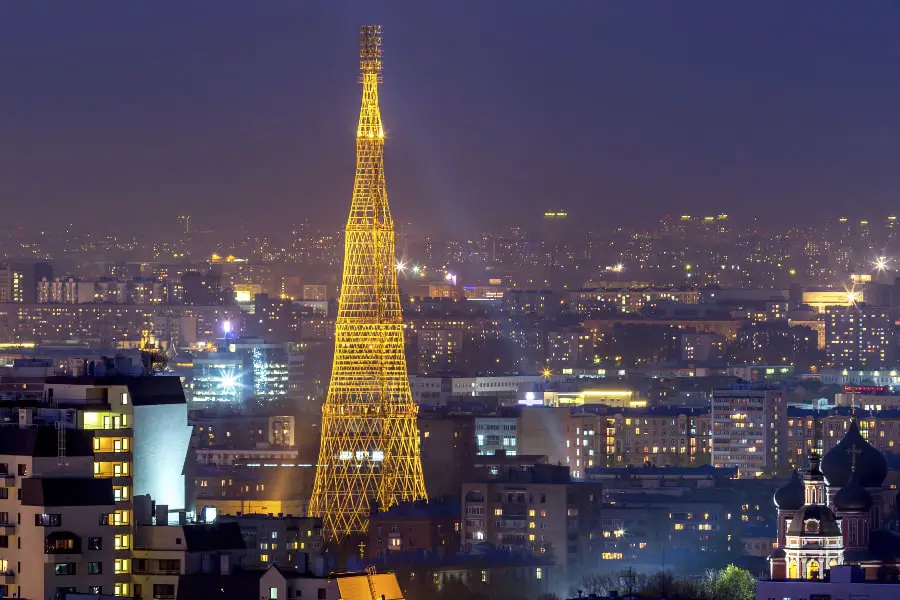
During this period there was a movement towards the mass reconstruction of cities. This was facilitated through the foundation of the Mossovet Architectural Workshop which was tasked with the reconstruction of Moscow as the new Soviet capital. As Petrograd and other major cities followed suit, there was an overhaul of the planning and execution of cityscapes and the framework of urban planning which saw changes such as wider roads, large public buildings, and a surge of public housing construction. The most famous construction of this period is Lenin’s Mausoleum by Alexey Shchusev. Whilst originally constructed in wood, in 1930 this structure was rebuilt in red and black labradorite stone.
From the 1920s, cultural life largely influenced architecture and unions such as the Association of New Architects (“Asnova”) encouraged the melding of architecture and creative arts so as to create artistic and sculptural buildings. Other revolutions in architecture at this time included changes to public buildings such as the Worker’s Club and the Palace of Culture. This incorporated large and industrial motifs, which is epitomised at the Zuev Club (1927-1929).
Russian architecture in the Postwar Soviet Union period (1930 – 1970)
Stalinist architecture was booming, and to this day there is a strong legacy of Stalinist architecture throughout the country.
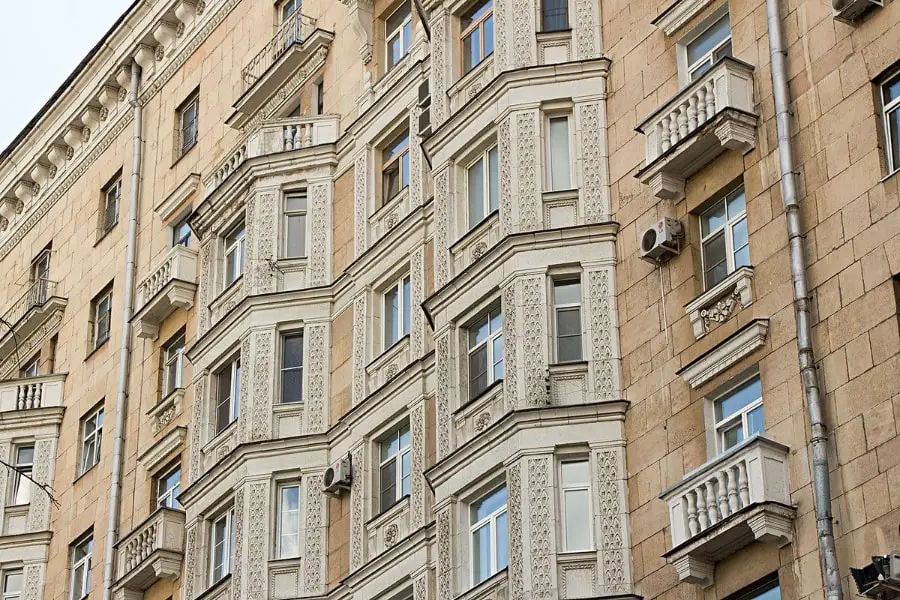
At this time, there was also a strong focus on rebuilding destroyed structures as a result of the devastation from World War II. This included the commission of seven high-rise buildings, known as “Seven Sisters”. Subsequent to the victory of Russia in the second world war, Stalin anticipated that there would be an influx of tourism to the capital, Moscow. Growing anxiety for him was that people would compare his city to other great metropolises and quickly realise the lack of skyscrapers. Consequently, In 1947, he issued a decree to erect seven buildings all in the same Stalinist style. Today these buildings are known as: the Moscow State University, Hotel Ukraina, the Ministry of Foreign Affairs building, Leningradskaya Hotel, Kudrinskaya Square Building, and the Red Gates Administrative Building. These baroque and gothic buildings were finished in 1953, complete with their own bunkers, and are sprinkled around Moscow. However, Stalin also sanctioned the construction of more siblings around other USSR capitals and can be found today in Prague, Warsaw, Bucharest and Kiev.
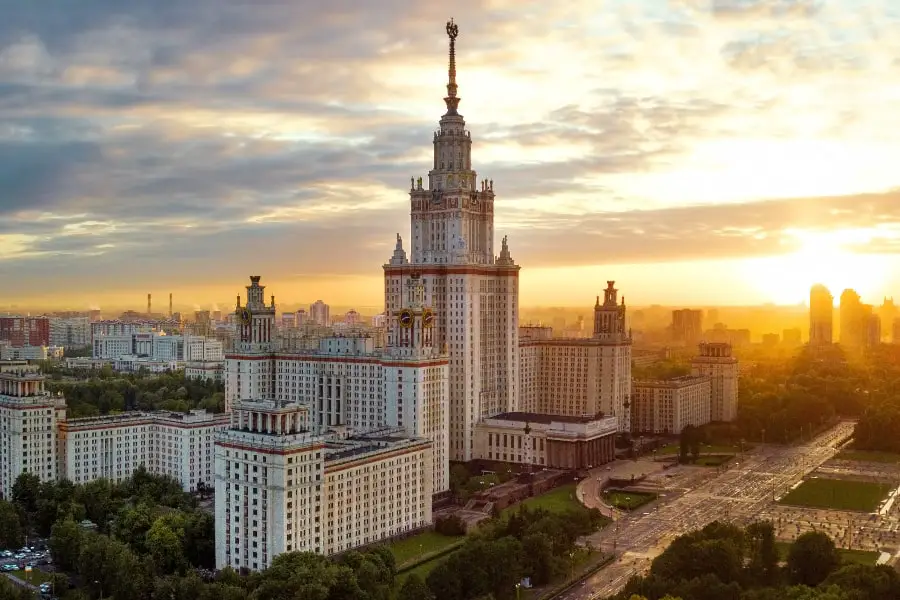
Subsequent to the death of Stalin in 1953, Nikita Khrushchev exercised his discretion to expedite the construction of housing by emphasising that the buildings lose their ‘decorative extras’ in order to speed up the process. This gave rise to mass produced design characterised by pre fabricated concrete blocks with openings for windows and doors. Once completed, these structures were transported to steel frames for houses. These were known as block houses. Into the 1960s, the Pyatietazhki or Khrushyovki dominated the style of housing construction. However, although they were efficiently built and rapidly constructed, they were dull, repetitive and ‘cookie – cutter’ buildings which gave rise to the stereotypical image of grim Soviet architecture.
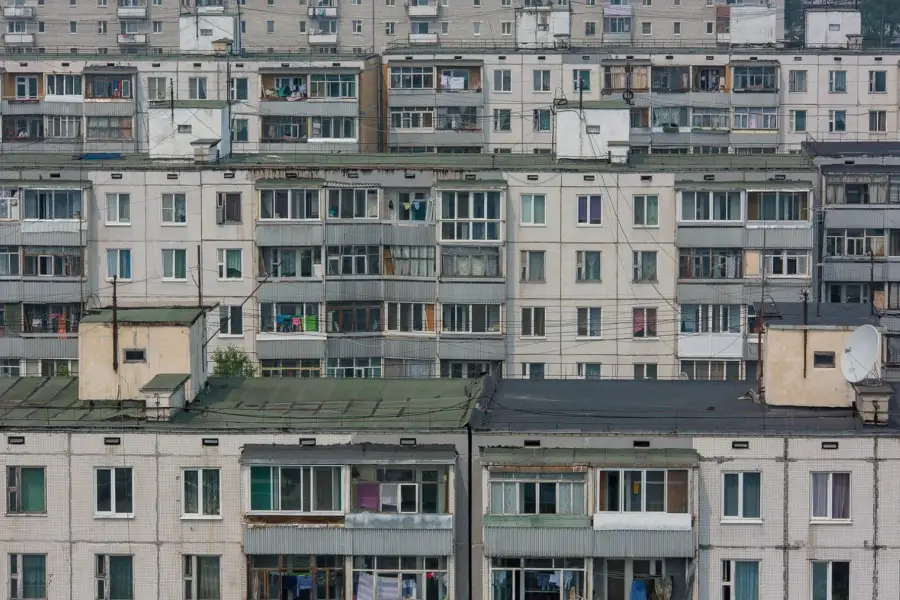
Throughout the 1970s, architecture was increasingly liberated and a variety of designs infiltrated the scene. Apartment flats reincorporated decorative elements and started to form parts of estates rather than stand-alone buildings.
Modern Russian architecture (1970 – to present)
Architecture flourished in modern Russia where restrictions on design such as height and decoration were lifted. This, combined with the improved financial health of Russia meant that the first skyscrapers were constructed and the Moscow International Business Centre was erected.
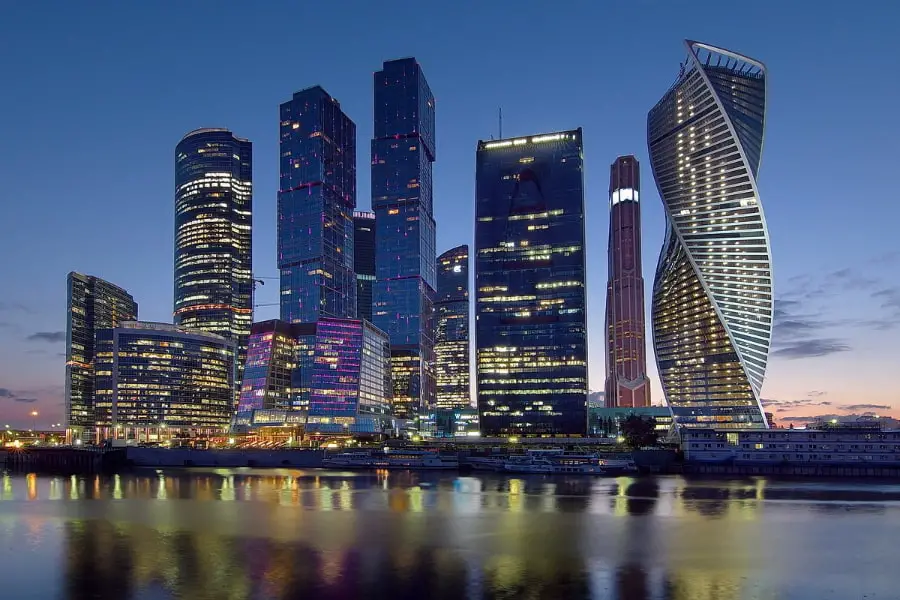
Some architects chose to pay homage to previous styles such as the Triumph Palace in Moscow, which commemorates Stalinist architecture. Today, Moscow is a gorgeous mix of old world charm and bustling, modern cityscapes – a stunning encounter both in summer and winter.
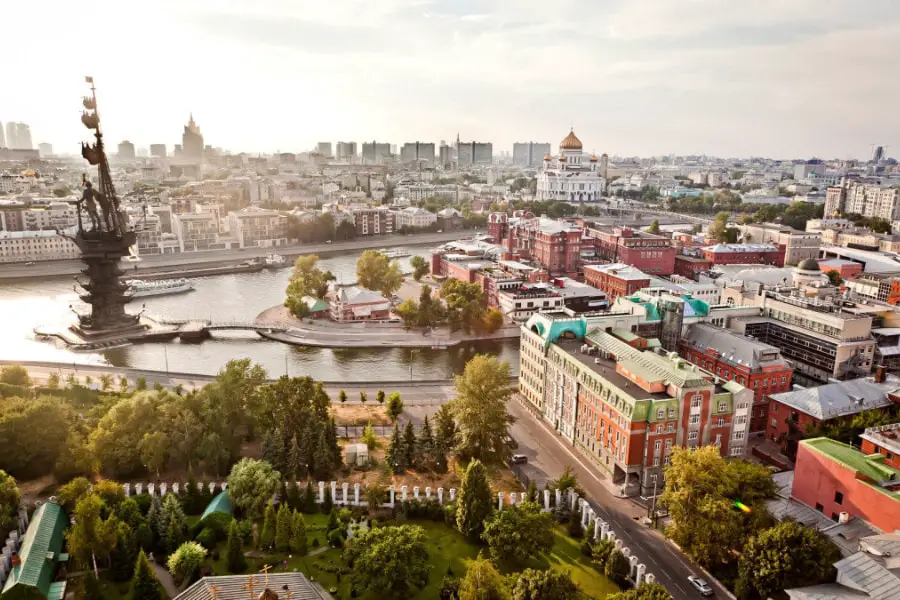
See the marvels of Russian architecture on a Moscow, St Petersburg and Golden Ring Tour, unlock the nation’s rich folklore and national history for yourself.
Enjoy a video clip that displays Moscow architecture nowadays:
Related posts
If you have any urgent questions or enquiries, please give us a call +61 412 587 785
